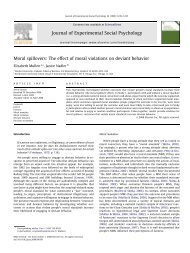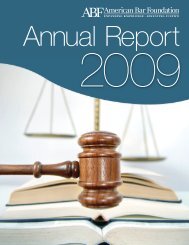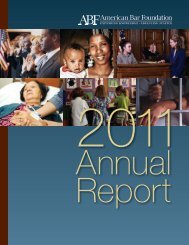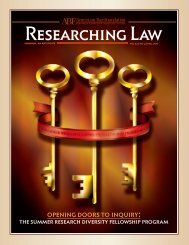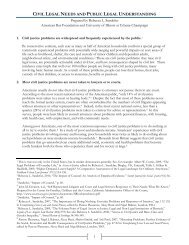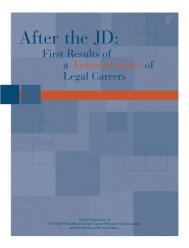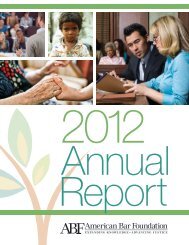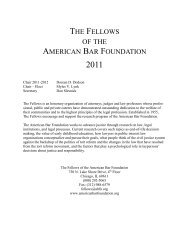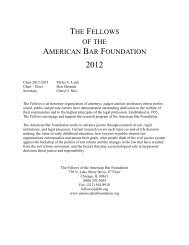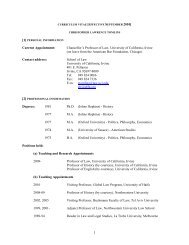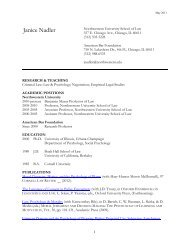Contesting Workplace Discrimination in Court - American Bar ...
Contesting Workplace Discrimination in Court - American Bar ...
Contesting Workplace Discrimination in Court - American Bar ...
Create successful ePaper yourself
Turn your PDF publications into a flip-book with our unique Google optimized e-Paper software.
Turn<strong>in</strong>g to discrim<strong>in</strong>ation issues <strong>in</strong> Figure 5.4, cases <strong>in</strong>volv<strong>in</strong>g sexual harassment have both the greatest likelihood of settlement(65 percent) and the lowest likelihood of go<strong>in</strong>g to trial (slightly under three percent). Claims of discrim<strong>in</strong>atory promotion showthe exact reverse; such cases are the least likely to settle (51 percent) and the most likely to end <strong>in</strong> a trial (about 6.5 percent).Hir<strong>in</strong>g cases stand out somewhat <strong>in</strong> that they too are almost as unlikely to end <strong>in</strong> trial as are sexual harassment cases (just overthree percent). F<strong>in</strong>ally, discrim<strong>in</strong>atory fir<strong>in</strong>g—the most frequent claim <strong>in</strong> EDL cases—appears to fall somewhere <strong>in</strong> between:about 54 percent of fir<strong>in</strong>g cases settle, while just under six percent go to trial.figure 5.4 :percent outcomes bydiscrim<strong>in</strong>ation issue allegedsettleddismissedsummary judgmenttrial-32-



